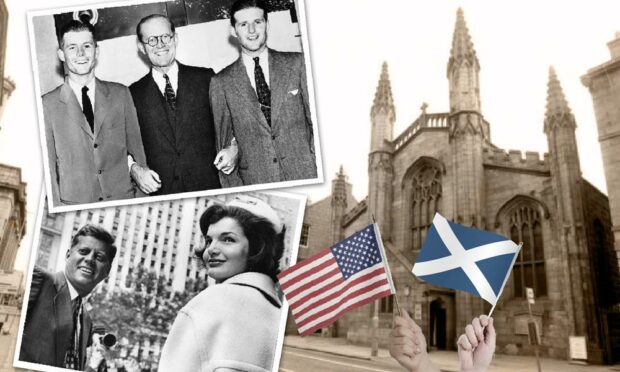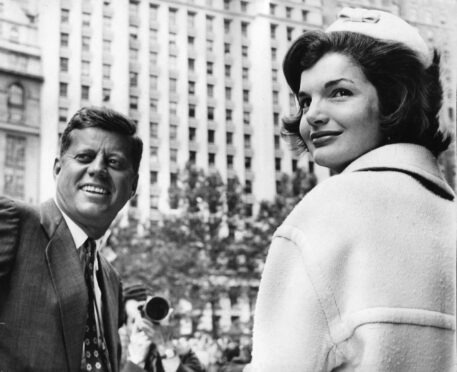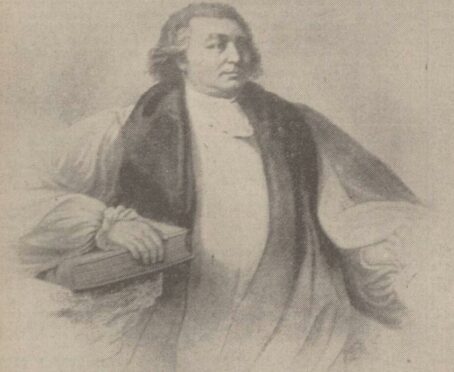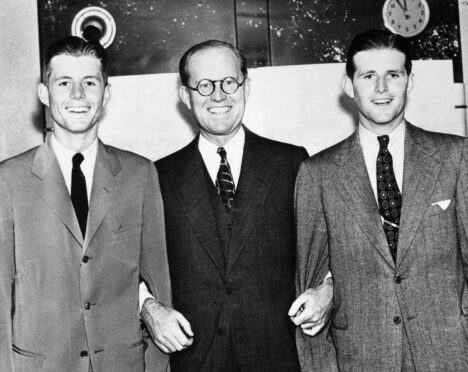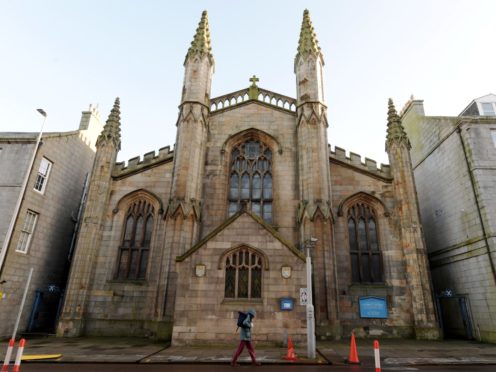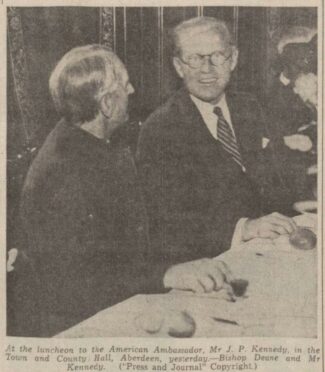The assassination of President John F Kennedy on this day in 1963 was one of the most significant events of the modern age.
Political figures have always been targets for fanatics, but the shocking shooting of JFK was different – it took place in the television age.
The cameras were rolling as his blood-splattered wife Jackie could only watch as her husband lay dying in their cavalcade in Dallas.
Captured on film for all the world to see and immortalised in American culture, JFK has become more famous in death than in life.
As a president, he was different.
Relatively youthful, he was just 43 when he was voted into office; he had a beautiful wife and family, but he also made history as the first Catholic President.
It was religion that gave the Kennedys an unlikely connection with Aberdeen.
Twenty-five years before his brutal and untimely murder, a young John Kennedy was brought to Aberdeen by his father Joseph P Kennedy, American Ambassador to Britain.
The trip was for official business, cementing a long-standing religious relationship between Aberdeen and America.
Consecration of Bishop Seabury
The first Episcopal Bishop of America, Samuel Seabury, was brought to Aberdeen from Connecticut in 1784 to be consecrated into the church.
Bishop Seabury made the voyage of more than 3,200 miles to Britain as there were no Anglican bishops in America to declare him sacred.
He could not be consecrated in England – as an American he could not take an oath of allegiance to the King of England.
His only option was to travel north from London to Scotland where the Episcopalians were an established church, but not the ruling church.
On November 14 1784, Bishop Seabury was consecrated close to the site of the modern-day St Andrew’s Cathedral in Aberdeen – but only on the condition he studied the Scottish rite of holy communion.
His dedication ceremony in room of Skinner’s House used as a chapel was conducted by Bishop of Aberdeen Robert Kilgour, along with Bishop of Ross and Moray Arthur Petrie.
Joseph Kennedy lays foundation stone
It was the start of a centuries-long link with Aberdeen and the establishment of the Episcopalian Church in America.
The significance of the event was not forgotten in America, and on September 2 1938 Joseph P Kennedy laid the foundation stone of the Seabury Memorial in St Andrew’s Cathedral in Aberdeen.
The occasion was reported in the Press and Journal at the time: “A courtyard at the rear of St Andrew’s Cathedral hemmed in by buildings and dotted with piles of building stone and masonry was the drab setting of the historic ceremony linking Scotland and America.
“The piece of ground on which the foundation stone was laid was encircled by the company of about 1000 seated row upon row.
“Bishop Deane chisel-marked the stone in three places with the sign of a cross.
“After the bishop had blessed the stone came the most impressive moment.
“Mr Kennedy stepped forward and with a trowel spread mortar on the granite base over which the foundation stone hung suspended.
“When the stone had been lowered into place Mr Kennedy said ‘in the faith of Jesus Christ, and in memory of His servant, Samuel Seabury, we lay this stone in the name of the Father and of the Son and of the Holy Ghost’.”
A number of messages were then read out, including one sending best wishes from Mrs Roosevelt, wife of then President Franklin Roosevelt.
Mr Kennedy paid tribute to “the Scottish bishops who decided, at considerable risk to themselves, to lay their hands on Bishop Seabury, the humble applicant from across the Atlantic, and helped to erect a milestone in the history of religious freedom”.
First official visit to Scotland for JFK
But his visit also came at a time when Europe was on the cusp of war due to the rise of Hitler and fascism – and just weeks before Chamberlain signed the doomed Munich agreement.
With this in mind – and accompanied by his 21-year-old son John F Kennedy – he made a poignant speech in Aberdeen.
He called for “a reawakening of spiritual courage to provide something more for young men and women to hope for than a short life carrying a gun”.
The official visit to Aberdeen against a backdrop of instability in international relations perhaps inspired a young JFK to enter politics.
Mr Kennedy added: “Some of the nations of the world are involved in disputes, both internal and external. The rest are anxiously watching from the sidelines, doing what little they can to counsel patience and forbearance and, above all, the avoidance of war.
“In such circumstances, it ought not to be beyond the reach of human intelligence to prevent the disaster everyone seems to fear.
“I believe it can be done by the application of the principles we have been discussing – by faith, by spiritual courage, by loyalty to right dealing and by the exercise of common sense.”
Kennedys’ love for Scotland
Despite the foreboding warning against war, the rest of the visit was more light-hearted.
The Kennedys spoke of a love for Scotland at two receptions they attended afterwards.
In Aberdeen Town House, where toasts were given to the King and President of America, Mr Kennedy shared an anecdote about Queen Elizabeth (the Queen Mother).
On a previous visit to Scotland as ambassador, he said they were the only two in the royal box who “rooted for Scotland” at an international rugby match.
The Queen supported Scotland because she “belonged there”, he “because there was a little fellow on the Scottish team who ran faster than anyone he had ever seen in his life”.
Afterwards, the Kennedys were taken to Edgehill House in Milltimber to a sherry party hosted by Aberdeen philanthropist Sir Thomas and Lady Jaffrey.
Standing on the lawn in bright sunshine, Mr Kennedy Snr said that “Cannes and Antibes are not half as attractive as Scotland” and that “more time should be spent advertising the country”.
He added, with a smile: “I do not know what there is in the Scots and English temperament, but when I went around saying how nice the weather was, everyone said ‘ah, but you should have been here yesterday’.”
Mr Kennedy was having to depart to Nuremberg on more government business, but said he was to return to Scotland in the coming weeks with some of his family, not least “to try to repeat his hole-in-one on the golf course”.
He joked that he wanted to bring all of his family to the city, but the “Lord Provost had informed him that Aberdeen already had a housing problem”.
